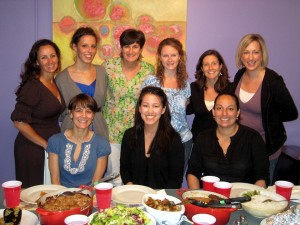In the past, we’ve discussed trending topics in food. Cupcakes, cream puffs, and wild ice cream flavors have all taken their turns rising and falling off the radar of Americans. Sushi has made its runs with wild renditions (chocolate sushi anyone?) but has always been, still is, and will always be, very prevalent in our society. So what’s up with sushi?
Sushi is, technically, the reference to the vinegar rice used to make the rolls. We now use the word sushi to refer to a piece of raw fish or vegetable served with this rice. There are multiple types of sushi: Nigirizushi, Makizushi, Inarizushi, and Chirashizushi.
Nigiri is formed by making an oblong shape with the rice and laying a topping over it (commonly fish). It is occasionally wrapped with a piece of nori (seaweed), but not always.
Maki is any cylindrical roll of the rice, toasted seaweed, and various fillings, which sometimes combine both fish and vegetables. Maki sushi has several different subcategories that depend on how it is made and how thick the roll is. These categories include hosomaki (thin rolls like cucumber or tuna rolls), Futomaki (fat rolls that are like hosomaki except up to an inch and a half in diameter), Urumaki (inside out roll with the rice on the outside of the seaweed and peppered with fish roe or sesame seeds), and temaki (a sushi roll in the shape of a cone).
Inarizushi is a pouch of fried tofu usually filled with just the sushi rice. There are several different variations but this simplistic form is the most original.
Chirashizushi is a bowl of rice with other ingredients mixed in. These ingredients vary from region to region but also from uncooked to cooked.
What many people do not know is that the sushi that we find most common, such as the California roll, the rainbow roll, and the spider roll, are considered western sushi and are far from what is ordered daily in Japan. The original sushi eaten in Japan consisted of fermented fish, which was taken out of the rice. The vinegar that was added to the rice created better taste and preservation, which eventually made the fermenting process unnecessary. In the 19th century, a man named Hanaya Yohei invented the contemporary version that is so common today. It was kind of like the beginning of fast food because of the speed it was made and instant gratification when eating it!
We may not be sushi chefs but we definitely know what tastes good. Yesterday, we featured a recipe for Hosomaki, which is a tuna sushi roll with hot sauce. Now that we’ve made you a Grade A expert, try your hand at making this recipe! To get yourself started, try the Sushi Chef Sushi Making Kit or the Complete Book of Sushi.
Some great suggestions from the office here at PTC include:
Sushi Bistro on Balboa in the Richmond
Let us know your favorites or report back if you’ve tried any of our suggestions!


; ?>/img/parties-that-cook-blog-logo.jpg)

